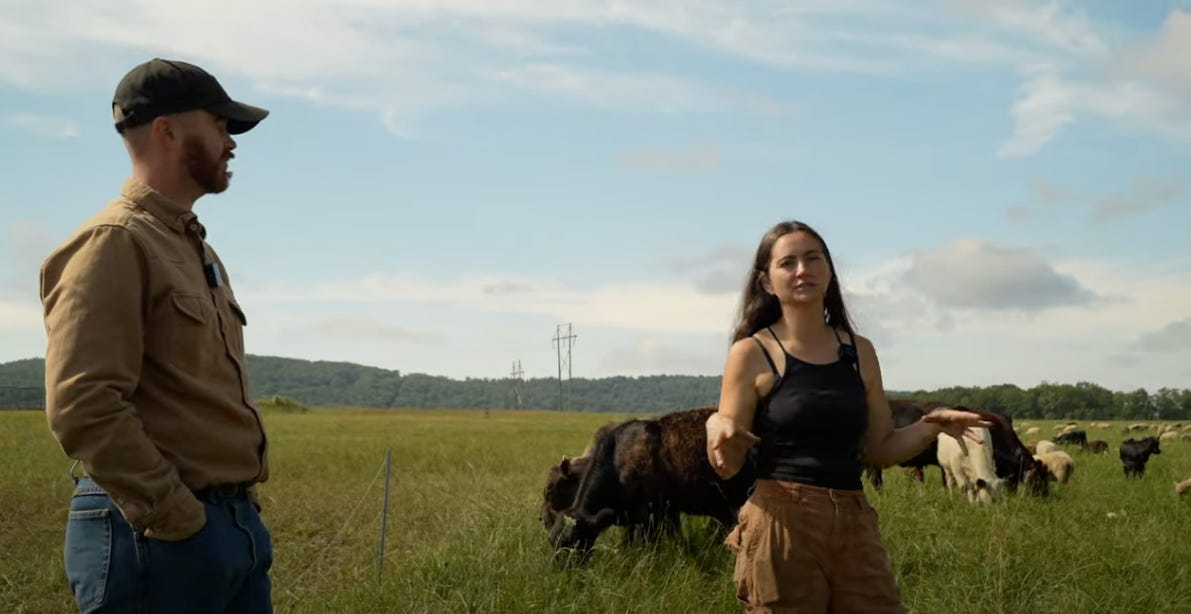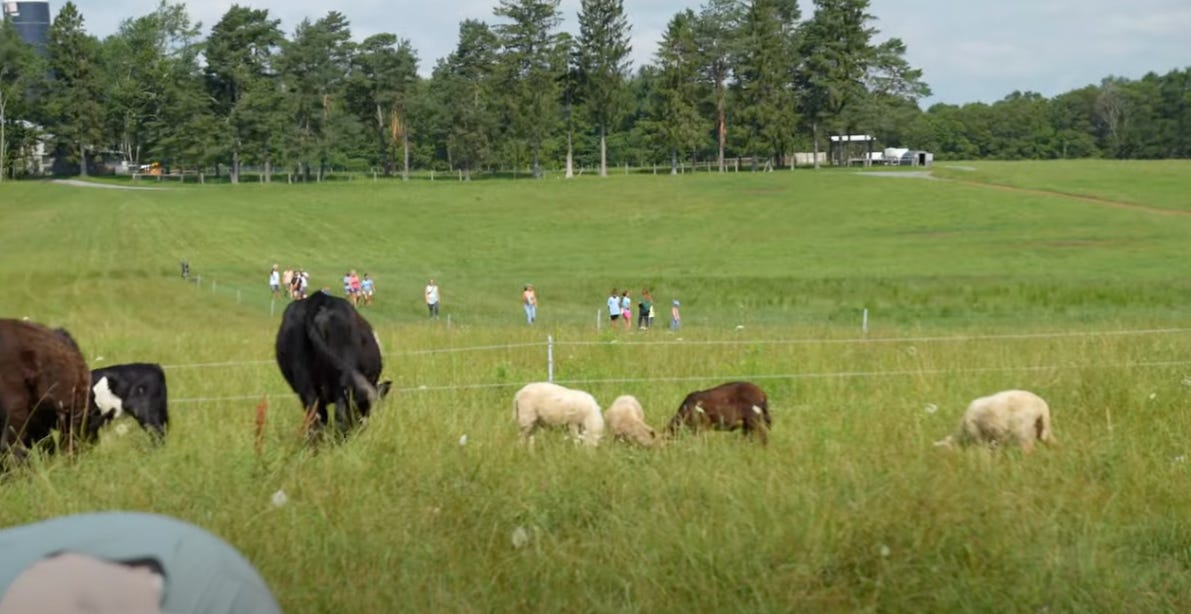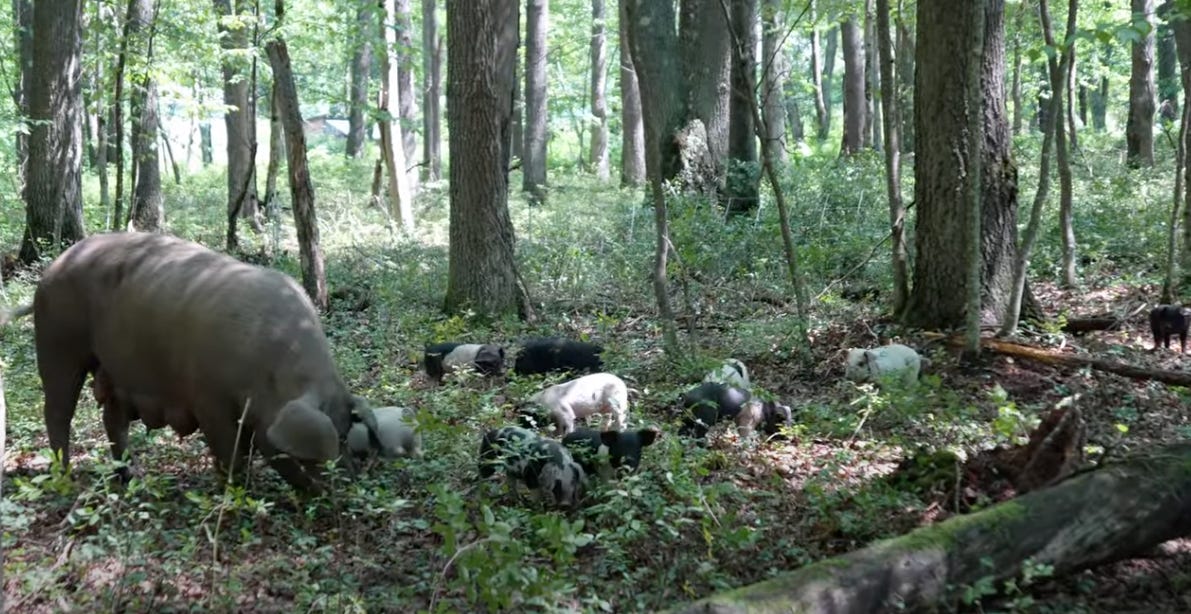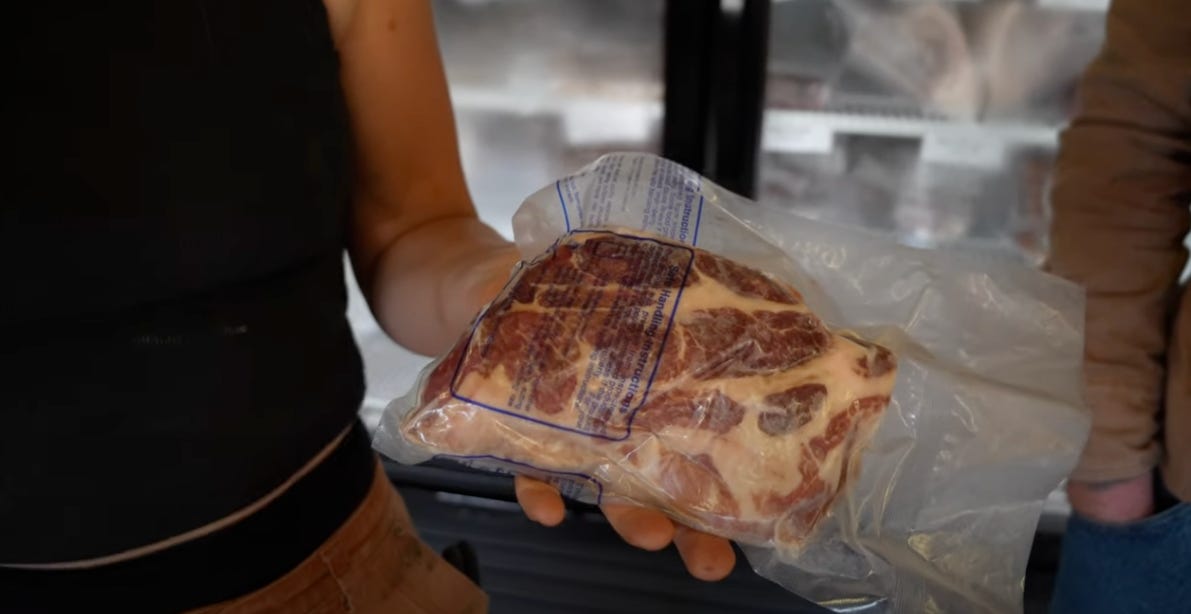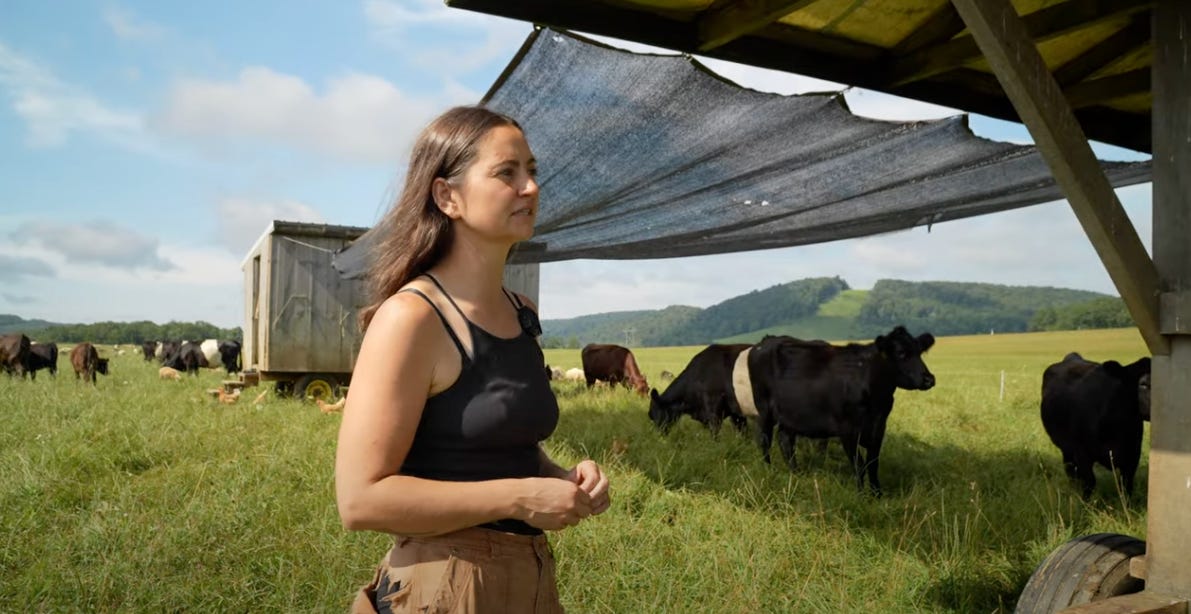From Fashion to Forest Pork: Julie's Multi-Species Revolution
How one first-generation farmer is proving factory farms wrong with radical regenerative methods
Picture this: A fashion designer walks away from her career, buys degraded corn and soy fields, and within four years builds one of the most innovative regenerative operations on the East Coast.
No farming background. No inherited land. Just pure determination to prove that animals raised the right way can heal land, feed communities, and turn a profit.
Meet Julie from Wildom Farm – a first-generation farmer who's demolishing every excuse industrial agriculture has about why "sustainable farming can't scale."
The Three-Species System Nobody Thought Would Work
Here's where Julie's operation gets revolutionary. She runs cattle, sheep, and chickens together in the same paddocks. Not separate. Not rotated individually. Together.
"Everybody goes together," Julie explains. "If the sheep need to go to the barn for shearing, the cows follow. There's no way to separate them – they're bonded."
The results silence every skeptic:
Zero predator losses on lambs (cows naturally deter predators)
50% less labor (one move daily instead of three)
More even grazing (sheep eat what cows reject, chickens scratch through manure)
Currently using only 1/3 of available acreage on second rotation
This isn't theoretical regenerative agriculture. This is boots-on-the-ground proof that complexity creates resilience.
Forest-Raised Pork: The Game-Changer Nobody Talks About
While regenerative beef gets all the Instagram love, Julie's forest-raised pork might be her most revolutionary achievement.
"Their hooves never touch anything except soil," Julie emphasizes. "They only know sunlight and moonlight. No synthetic lights. Ever."
The Forest Advantage:
No smell (mycelial networks break down waste immediately)
Natural breeding (piglets nurse for 3 months)
Diverse diet (roots, grubs, nuts, plants – not just grain)
300 gallons of whey weekly from local cheesemaker
"People think pigs are dirty," Julie says, watching piglets play hide-and-seek behind trees. "They actually have designated bathroom areas. They're incredibly clean animals when given space."
The Test Results That Change Everything
Here's what'll make the carnivore crowd lose their minds: Julie's pork tested at 4.1% linoleic acid – identical to grass-fed beef.
"I hate the narrative that you shouldn't eat pork or chicken because of omega-6s," Julie says, holding up her fatty acid analysis. "We feed zero corn, zero soy, all certified organic. Our pork has the same PUFA levels as grass-fed beef."
Think about that. All those influencers telling you to avoid pork because of PUFAs? They're talking about factory-farmed pork, not forest-raised heritage breeds eating acorns and grubs.
From Corn Fields to Bird Sanctuary
Because Julie delays hay cutting until mid-July for nesting birds, her former monoculture fields have become habitat for eastern meadowlarks and bobolinks – grassland species in serious decline.
"I've seen the cows leave tufts of grass around nests when we move them," she marvels. "I don't know if they do it on purpose, but it's beautiful."
The slight reduction in hay quality? Her hardy Belted Galloways don't care. They're still fat and happy through Maryland winters.
Innovation Born from Necessity
Converting treeless corn fields to pasture created a shade problem. Julie's solution? A mobile shade system using $50 shade cloths, bungees, and pulleys between structures.
"Sure, cows occasionally get tangled and pretend they're ghost cows," she laughs, "but it beats spending thousands on permanent structures that limit flexibility."
The lesson? Start where you are with what you have.
The Numbers That Matter
Julie started in 2020 with:
100 egg layers
500 meat chickens
10 pigs
Zero ruminants
Today she runs:
Belted Galloway cattle (doubled through breeding)
50+ heritage sheep (expanding to 100)
Forest-raised pigs (10-30 depending on litters)
Pasture-raised chickens year-round
All on land that was chemical-soaked monoculture just four years ago.
Grazing season: Mid-April through December (sometimes February bonus days) Daily moves: Every single morning during growing season Processing: Books USDA slots one year in advance Sales model: Direct from on-farm store, sold out annually
The Bigger Truth
Every time I visit farms like Wildom, I'm reminded that the real revolution isn't happening in lab-grown meat facilities or industrial organic operations.
It's happening on farms where first-generation farmers like Julie are proving there's a better way. A way that turns degraded cropland into thriving ecosystems. A way that lets animals express every natural behavior. A way that produces meat so nutritionally superior it rivals any grass-fed product.
"If more people saw small operations like this that put animal care first, it would change minds," Julie reflects, watching her mixed herd peacefully grazing as lightning bugs begin their evening dance.
She wonders if the animals think the lightning bugs are pretty too.
In a world of factory farms and industrial efficiency, that kind of wonder – that connection between farmer, animal, and land – is revolutionary.
Your Move, Rebels
Julie's success demolishes the biggest myths about sustainable farming:
You don't need inherited land (degraded cropland works)
You don't need huge capital (mobile everything)
Forest pork can rival grass-fed beef (4.1% linoleic acid)
Multiple species can graze together (complexity = stability)
Small farms can be profitable (sold out every year)
Ready to support farmers like Julie? Find your local regenerative producer. Visit their farm. Buy their meat.
Because every dollar you spend is a vote for the food system we actually want.
Want more stories of farmers proving industrial agriculture wrong? Join 10,000+ food freedom rebels getting weekly updates on regenerative victories. The revolution starts with knowing who grows your food.
P.S. – Located near Maryland? Wildom Farm sells direct from their on-farm store. Forest-raised pork with 4.1% linoleic acid. Grass-fed beef. Pastured lamb. This is what meat is supposed to taste like.


